BLOG ARTICLE
how to tell the sex of Australian tarantulas
Sexing tarantulas is very difficult for young spiders, but as they develop there are some differences which makes sexing them quite easy. We’ll show you how.
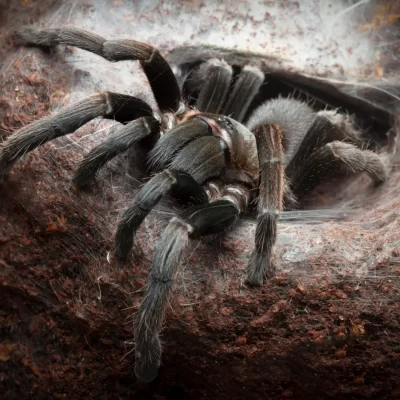
How to tell the sex of Australian tarantulas
Whether you’re new to keeping Australian tarantulas or just haven’t needed to sex one before and not sure what to look for, you’ve come to the right place to learn how to tell the sex of your Australian tarantula.
Sexing tarantulas (and most spiders for that matter), is very easy when they are mature, but much harder with younger specimens that haven’t yet developed the major external features that make it easier to tell them apart. First up, lets take a look at the differences with sexually mature Australian tarantulas. Here are some examples of different species with mature females on the left and mature males on the right. What we are looking at is called sexual dimorphism; the differences in appearance between males and females of the same species, such as in colour, shape, size, and structure.
Mature males and female tarantulas
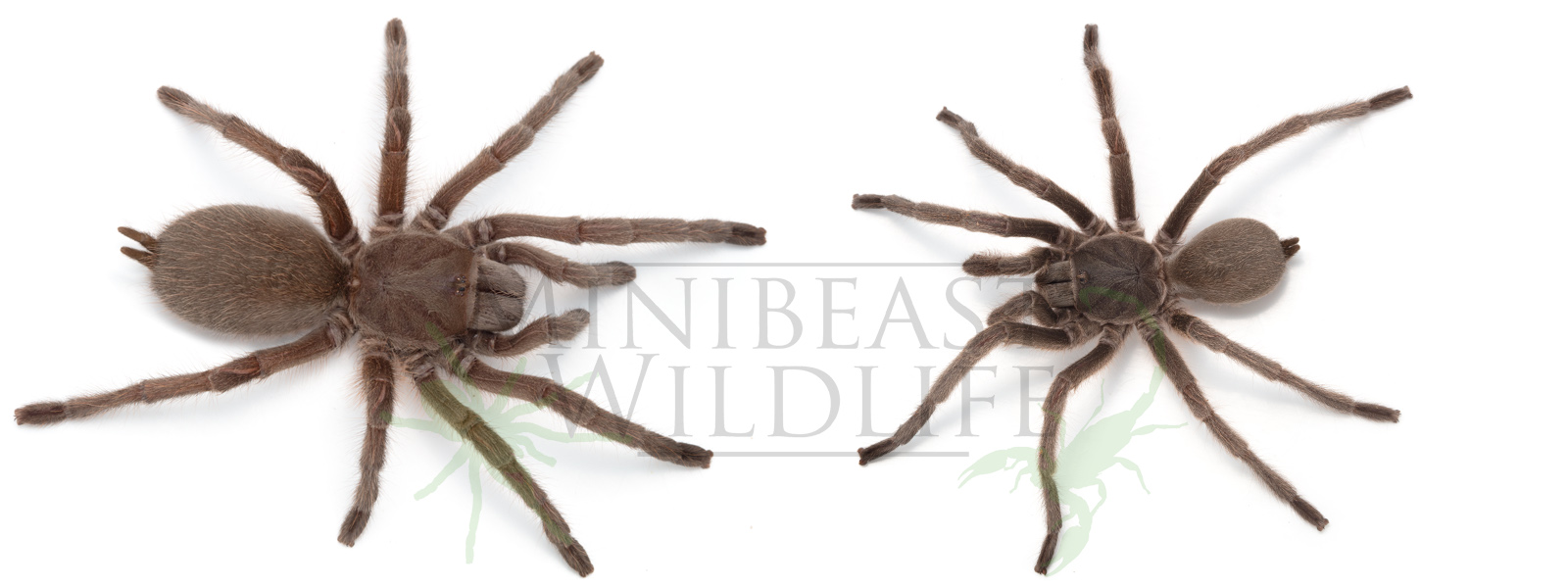
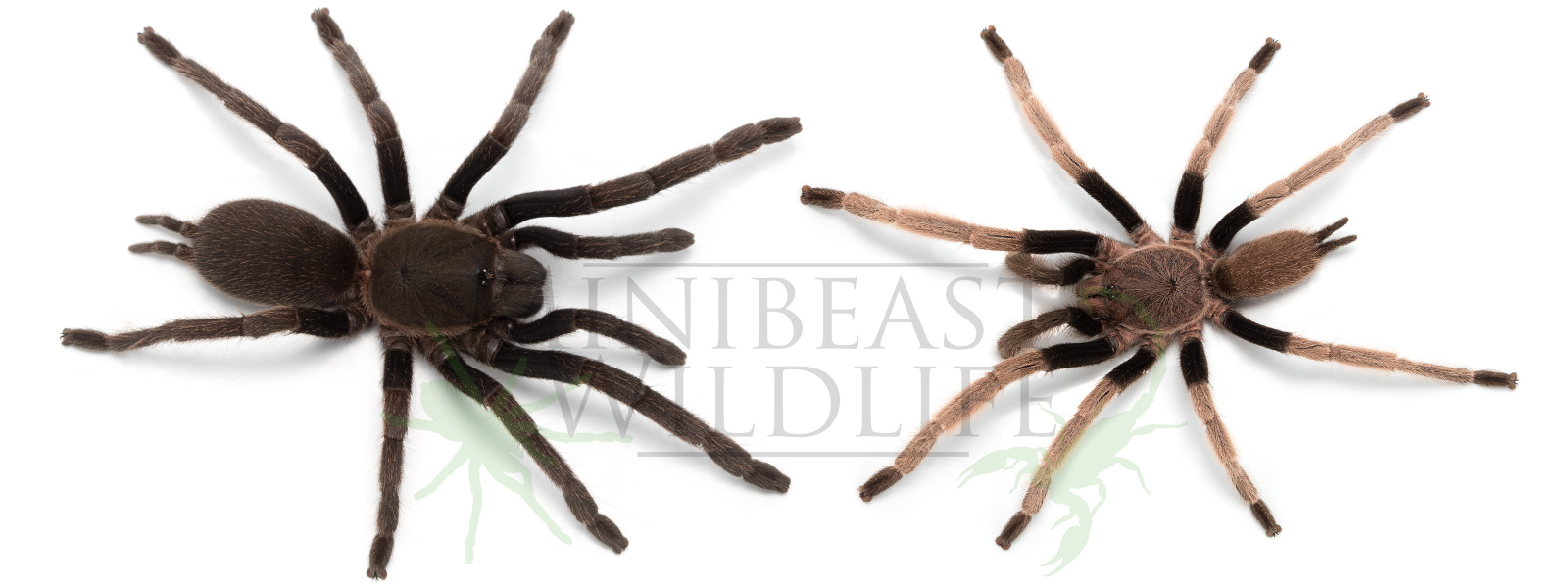
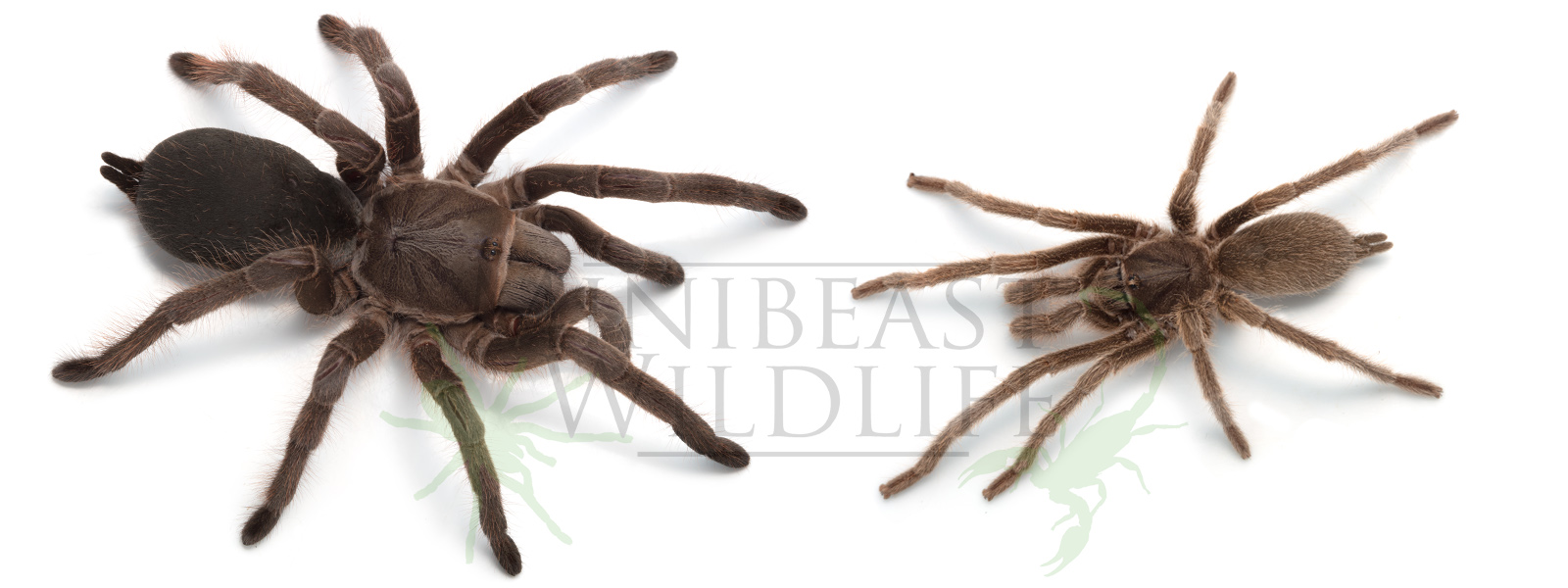

You’ll notice straight away that females are larger and more robust (heavily built) than their male counterparts. While the individual sizes of male tarantulas does vary and occasionally you’ll see a very large one, their body shape and structure is very different. They have longer, thinner legs than the females relative to their bodies and their body proportions vary too. It is very common for males to have small, thin abdomens, noticeably smaller than the cephalothorax (front half) of their body. For females it is usually the other way around as they are more interested in food for continued growth and egg production, while at this final stage of a male’s life, he is more focussed on finding a mate and food isn’t as much of a priority.
Looking closer - the pedipalps
While the general appearance of the two sexes is helpful and once you are experienced it can help you tell at a glance, the real key features to look for to confirm a mature tarantula is a male is the pedipalps, often just known as palps. These are the ‘feeler’ type organs at the front of the spider. The palps of mature female spiders are almost like miniature legs. They are much the same thickness throughout their length. The adult males’ palps though are very different and have specialised structures on the large segment, making it larger and bulbous.
The palps of adult male tarantulas (and all spiders) are specially adapted to perform a different role than that of their female counterparts. After emerging from their final moult, mature males have palps that are equipped to be sperm transfer organs. They use them to deliver sperm directly to the female via her sexual opening called an epigyne. This difference in the structure of the male’s palps makes identifying adult male tarantulas quite easy.
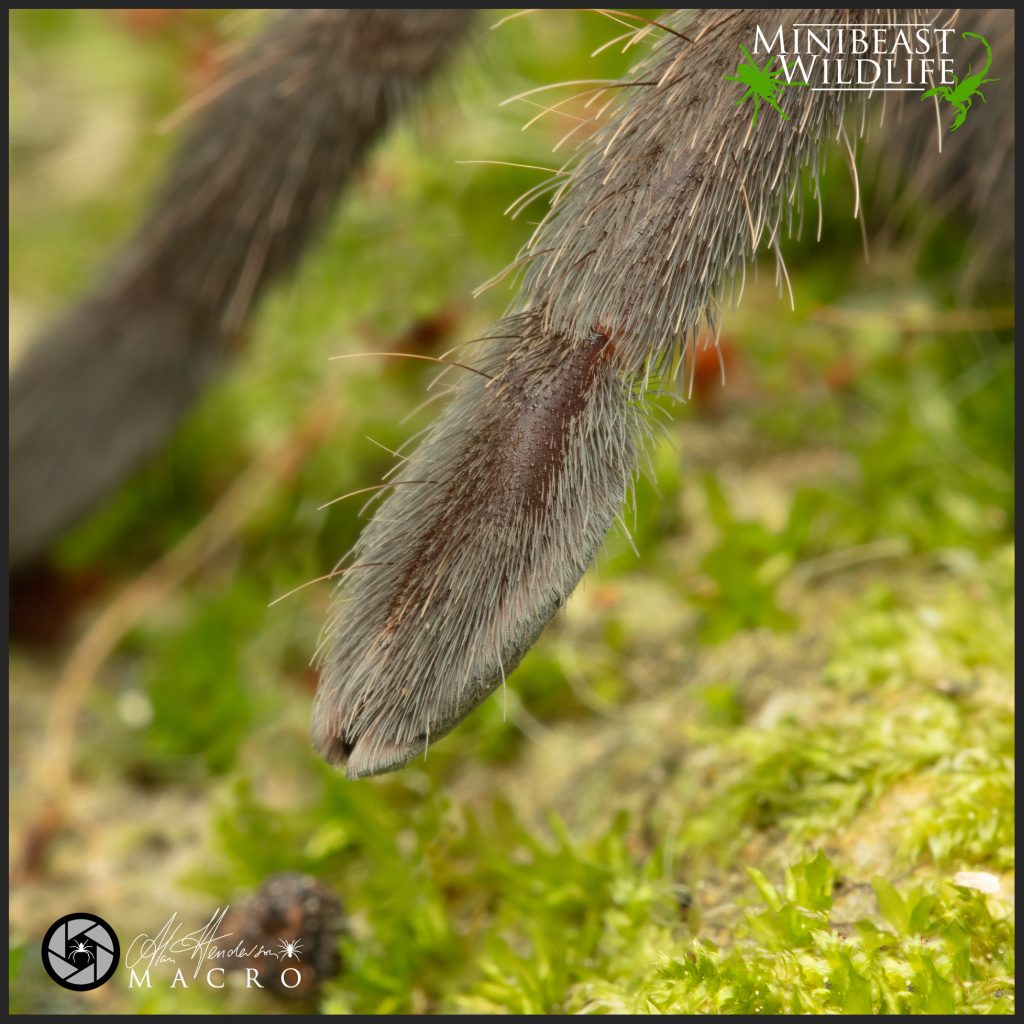
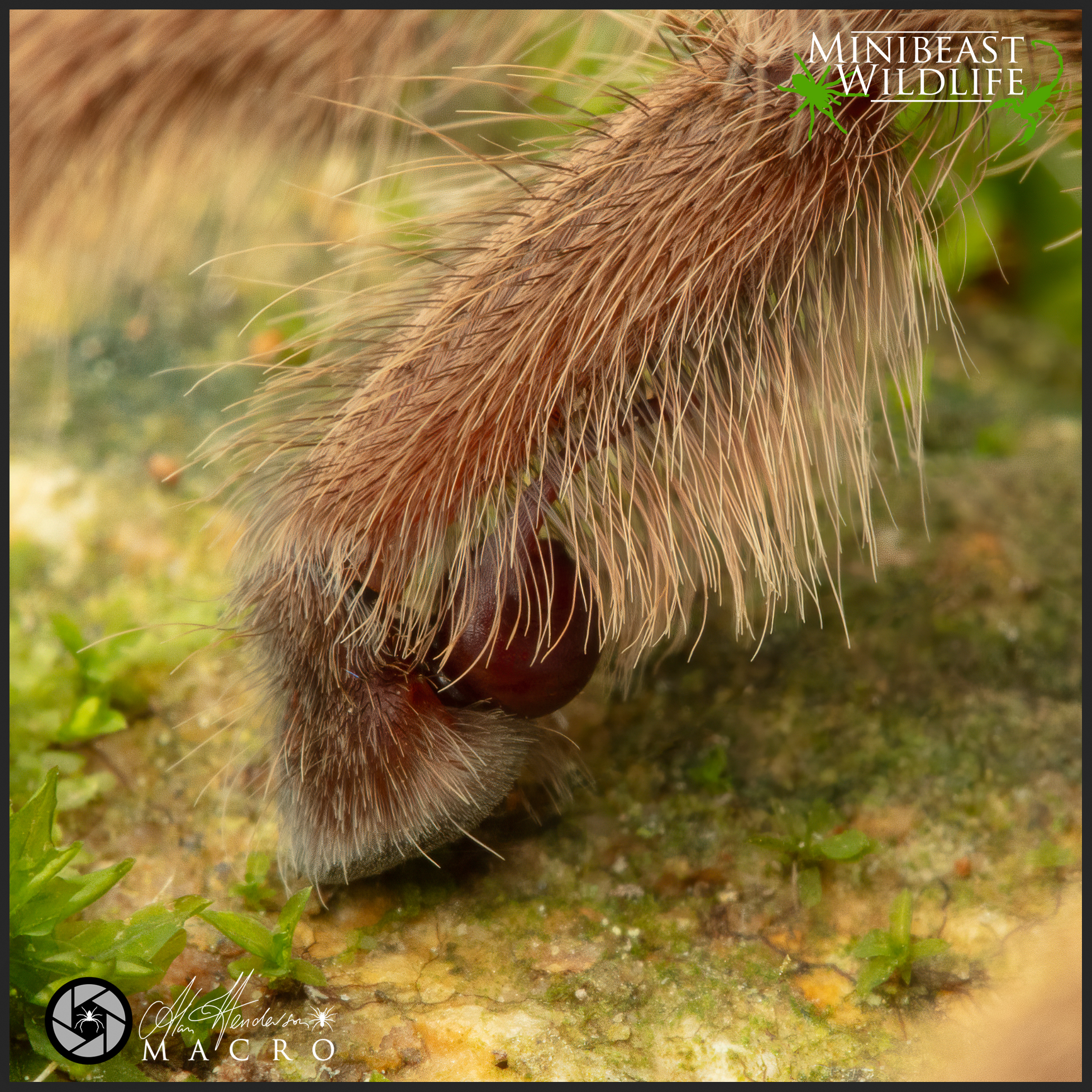
As you can see, mature male and female tarantulas are quite different so it is quite easy to figure out which sex is which. It is a little more difficult with immature tarantulas, it can still be done but we need to look a little closer beneath the tarantula.
Ventral sexing - looking underneath the tarantula
Juvenile tarantulas of most species look almost identical from above, but when we look beneath them there is a region we can investigate where differences are visible. This method is called ventral sexing. If you have investigated this method on non-Australian websites you will see that the method is regarded as quite difficult or not reliable with some overseas species, however it has proven to be a very reliable method for sexing Australian species at advanced juvenile stage. The differences between male and female don’t become really visible until the tarantula is about two years old. The age at which they can be sexed this way isn’t exact as it is the stage of development that is important – not the tarantula’s age. Growth rates can vary enormously due to the temperature they are being raised at, the amount of food they are being fed, and of course the species. Phlogius and Coremiocnemis species are fast growing, whereas Selenotypus and Selenotholus are slow to develop and it may take much longer than two years to see the features that distinguish males from females.
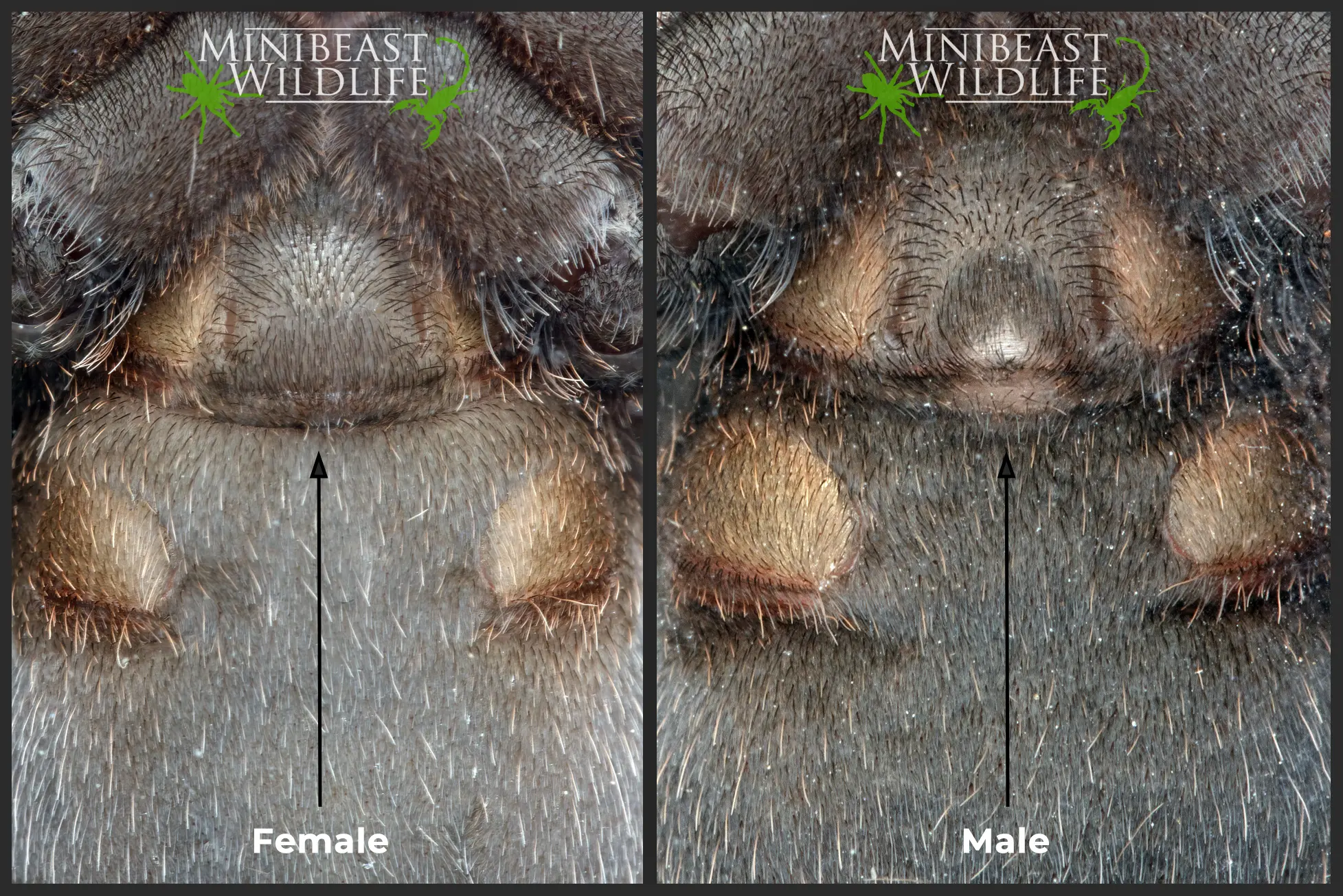
The image above shows the underside of an immature female on the left and an immature male on the right. It is a close up of the area just behind the hind legs where the abdomen begins. The four pale brown patches are the spider’s book lungs. The area of interest is in between the upper pair of book lungs. The male has a very tight cluster of darker hairs curling inward and a bare patch below it. The region around that dense hair cluster looks like the omega symbol Ω.
What we are looking for is the development of epiandrous fusillae. These are specialised hollow hairs which contain ducts connecting to silk glands. They are used by adult males when creating a ‘sperm web’ in order to transfer sperm to the bulbs on the ends of their palps. While we cannot see the fine detail of those structures at this scale, it is easy to see the difference between the male with them and the female without them.
At Minibeast Wildlife we use this method to sex our advanced 2nd and 3rd year captive-bred juvenile Australian tarantulas. We have found it very reliable and are able to offer sexed juvenile tarantulas in the Bugshop, and it also allows us to set aside the sex ratios required for our own future breeding stock.
Moult sexing
Moult sexing involves investigating the inside of the abdominal skin of the spider’s moult (exuviae) after it has moulted. A fresh soft exuviae is ideal, but an older hardened one can be softened by soaking it in warm water for about 10 minutes.
This method is a little more involved than those above, and does take some preparation and practice, but is considered the most accurate way to confirm the sex of an immature tarantula.
The features we are looking for are called spermathecae on the inside of the abdominal exuviae. The spermathecae appears as a little flap with two little ‘tabs’ at the top. This is where the female stores sperm after being mated. In this case we are looking for the presence of female features as the male lacks this flap and does not have spermathecae.
To look at this area you will need to tease open the abdominal skin as it is usually twisted or stuck together when the spider has emerged from it. It can take some practice and steady hands using fine forceps or household objects such as toothpicks to tease the delicate skin open and lay it flat. A magnifying glass or some other method of magnifying what you are looking at is very helpful.
The area to look at is actually the same are we were looking at with the ventral sexing, but we are of course now looking at the inside of the spider’s exoskeleton.
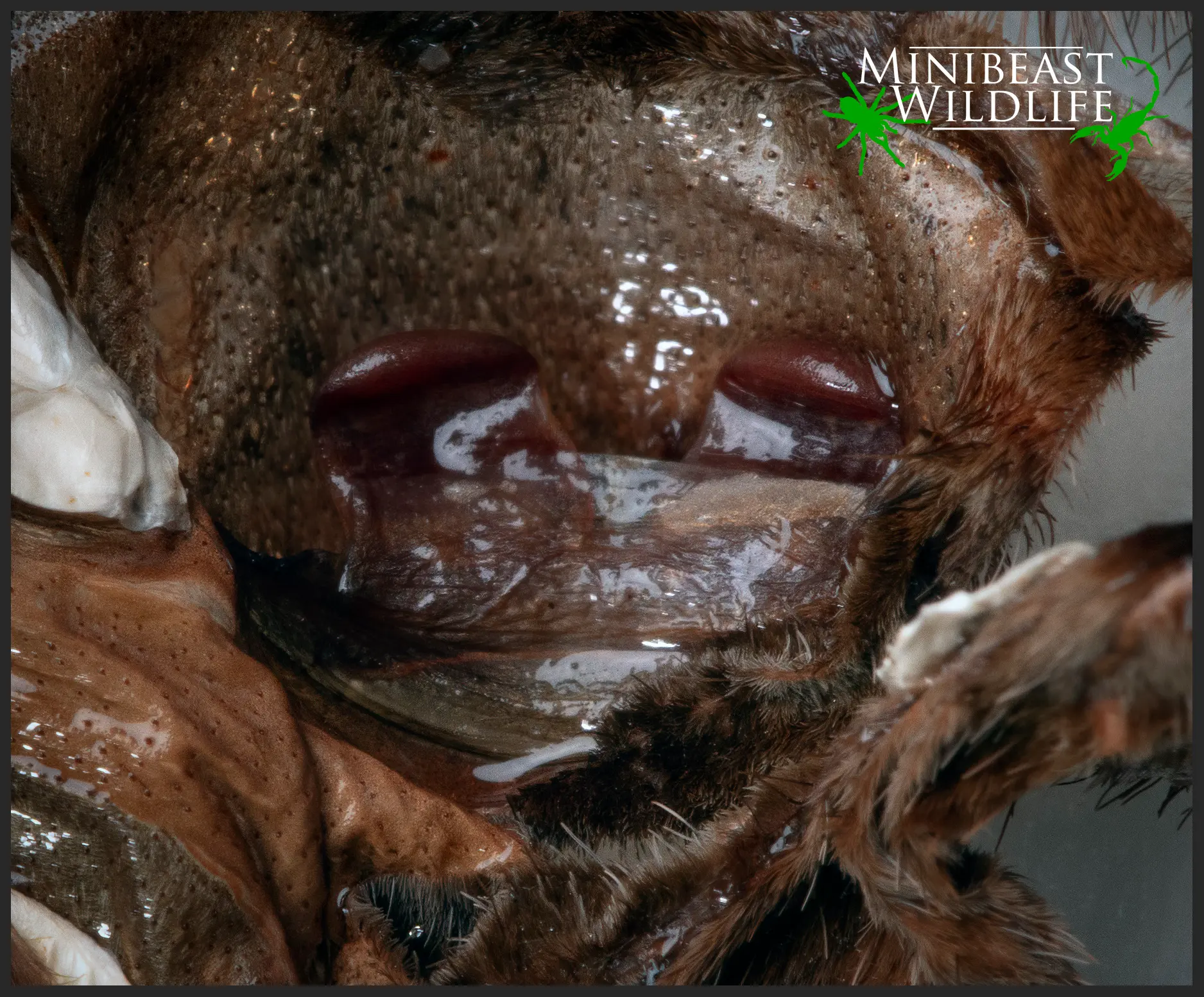
The are various reasons for wanting to know what the sex of your tarantula is. Obviously to breed them you do need to know!
If so, acquiring the opposite sex to what you have is the next step. Unfortunately most of the larger/sexed tarantulas available in pet shops or online have been poached from the wild. We don’t think that is a good thing at all so at Minibeast Wildlife we have advanced captive-bred juveniles that we have already sexed. Not only will you know the sex, but also the age of the spider with the bonus of knowing is a healthy captive-bred animal that hasn’t just been taken out of the wild.
You might also be interested in

Create great naturalistic displays for invertebrates
Naturalistic enclosures use natural elements to create a ‘slice of habitat’ for your animal to live in.
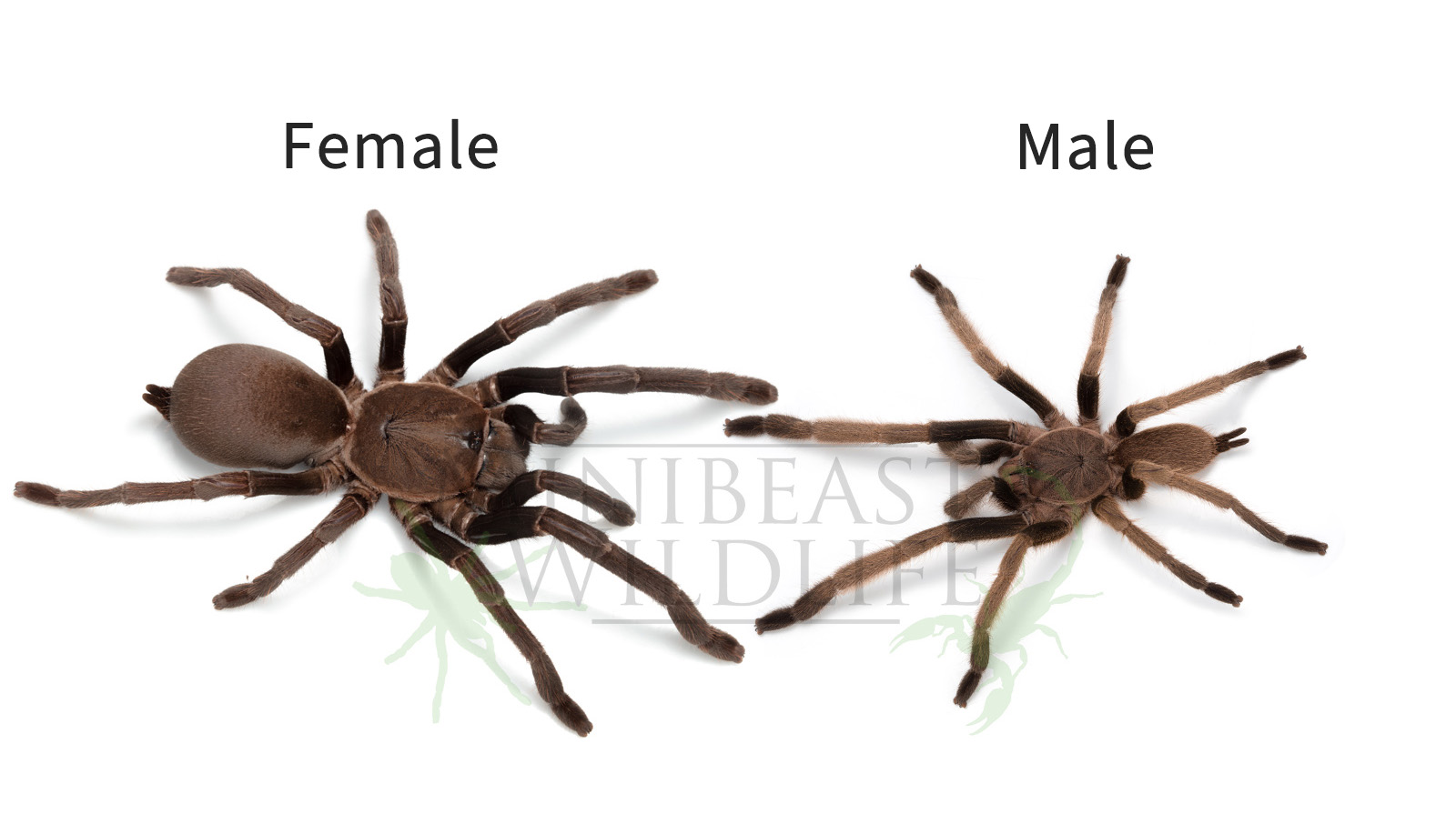
How to tell the sex of Australian tarantulas
Is your tarantula a male or female? How can you tell? In this article we’ll show you how to sex your tarantula!

How dangerous are spiders?
The truth about Australia’s most deadly bugs that bite and sting

Minibeast Wildlife’s bugs visit schools in Cairns
Minibeast Wildlife is engaging students throughout the Wet Tropics, visiting schools in Cairns, the Northern Beaches and the Tablelands.
